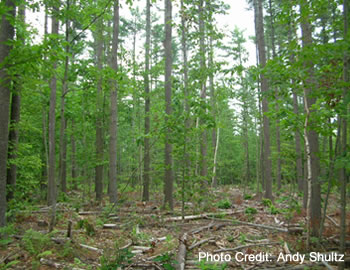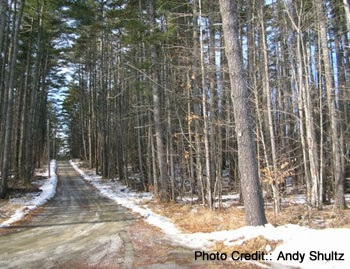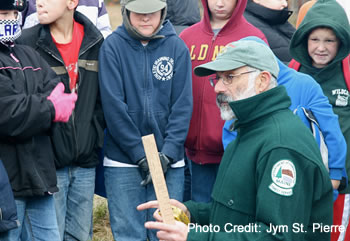Home → Your Woodland → Learn What You Can Do for Kennebec County's Woodlands → A Stewardship Storyline →What would a forest management plan do for me?
Your Woodland: A Stewardship Storyline
What would a forest management plan do for me?
A key element of woodland stewardship is creating and maintaining a Forest Management Plan (FMP). As one woodland owner put it, "My plan helps me know what I've got and what I can do with it."
FMPs are written for a defined period of time, often ten years. They can usually be amended and are generally updated or renewed after ten years to reflect changing landowner objectives, forest stand conditions, and markets. Amendments can also incorporate new information about forest health, wildlife habitat, or Harvesting technology.
An FMP provides an ideal place to articulate the values that inform your decision-making. It can help family members, professionals, and future landowners understand your priorities and goals more clearly and help you work toward your vision for your forestland.
FMPs come in many sizes, shapes, and levels of detail specific to the individual woodland and the landowner's goals. Most landowners hire a licensed forester to develop their FMPs, though some write their own plans.
The most important part of any plan is a set of recommendations for action on the property. This section is a blueprint for management. It can be a set of broad guidelines or a detailed schedule of actions, with dates and goals to be accomplished.
An FMP usually includes a section on the property's history, a description of the parcel's soils, terrain, and hydrology, and a description of the forest's current condition, resources, and values. The forest description can be broad and general or specific and detailed. The fieldwork to create an FMP can range from a walk-through to a thorough inventory based on measurements at a number of systematically located sample points. The amount of fieldwork depends on landowner needs, program requirements, and cost/benefit calculations.
Another important part of a plan is a good map. Maps show how woodlands fit into the surrounding landscape and convey information about property lines, types of forest cover, the locations of streams, ponds, and other bodies of water on or near a parcel, and roads, trails, and other structures important to management activities.
Would you like to learn more?
View a list of foresters who may be able to share sample Forest Management Plans.
Learn about the forest management and harvest plan requirements for Maine's Tree Growth Tax Law program.
Apply for cost-share incentive funds for a Woodland Resource Action Plan.
To learn about sources of financial assistance for forest management planning, contact Andy Shultz, Landowner Outreach Forester for the Maine Forest Service.
Would you like to talk with a person about this stewardship step? Here are some partners who can help:


